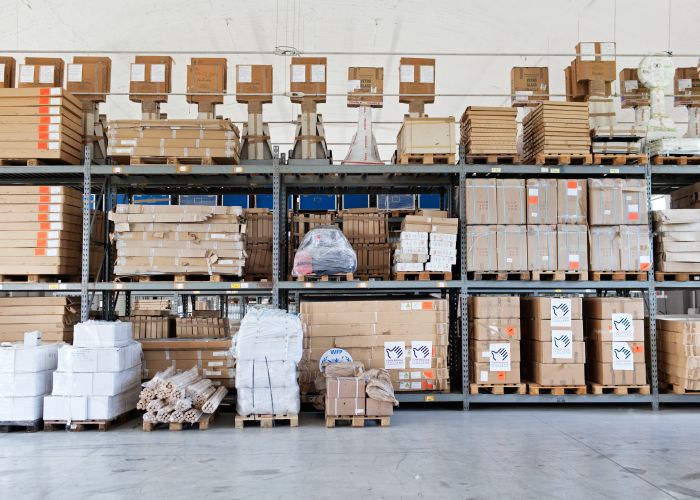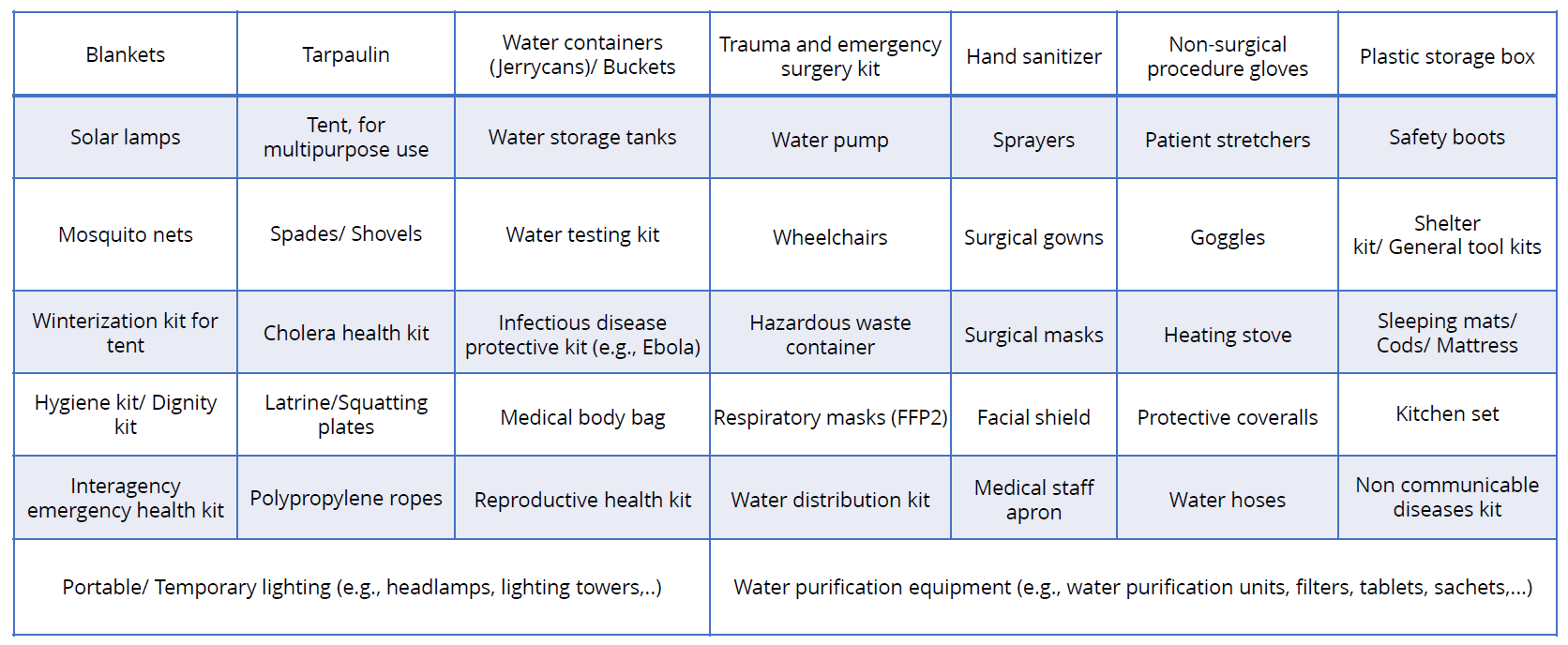
UNHRD Stock Taskforce
Question & answer
This document was prepared following the Stock Taskforce (STF) Spotlight Session held on 11 June 2025.
The session updated UNHRD partners on the taskforce’s progress, including the method used to calculate stock ceilings for core relief items and strategies to heighten efficiency and effectiveness for prepositioned stocks across the UNHRD network.
This Q & A offers clarification on common questions and supports a shared understanding of the taskforce’s goals, approach, and activities on the horizon. We hope it serves as a useful reference for all UNHRD partners.
Feel free to contact the STF team unhrd.stocktaskforce@wfp.org
1.What are the core emergency items identified by UNHRD Stock Taskforce?
Forty-four relief items have been identified as essential in emergency response. This core list includes shelter materials, water and sanitation supplies, medical items and personal protective equipment. The list of core emergency items are:

2. Will UNHRD partners be able to store items outside these 44? If so, under what conditions?
If space is available, the organization must ensure inventory turnover for items not included in the Stock Taskforce (STF) list. To justify storing these items, an implementation / distribution plan and a clear rationale must be provided, citing their critical role in emergency response. The Stock Taskforce will regularly review the list of 44 core emergency items to ensure to keep it aligned with evolving needs.
3. How were the stock ceilings calculated and what data sources were used?
The stock ceilings were determined based on historical dispatch records from the UNHRD network, analyzing the first 90 days of emergency responses between 2017 and 2024.
Two scenarios were used:
- setting a fixed target beneficiary count for a core group of 12 relief items and
- using the highest recorded demand for the remaining items in the full list of 44.
This approach keeps UNHRD ready for large-scale emergencies without relying on immediate replenishment.
The stock ceilings are designed to help the UNHRD network support up to 250,000 beneficiaries across all hubs during the initial phase of a humanitarian crisis, while also balancing preparedness and efficient use of storage space.
4. What is the remaining buffer capacity overall or per hub?
One to five per cent of the total capacity has been reserved as a buffer in the stock ceilings calculations to account for fluctuations and operational flexibility.
5. What if I want to store items belonging to the list of 44 but the hub is at ceiling level for these items?
Items that have already reached their ceiling stock level will be temporarily excluded but may be re-evaluated in the next replenishment cycle.
The replenishment system, to be outlined in Phase 3, will ensure timely restocking after dispatches. This interval must remain short, as preparedness for future emergencies is critical.
Stock ownership may evolve based on changing operational priorities. The objective is to maximize stock availability for Loan and Borrow mechanisms, which strengthens inter-agency collaboration and encourages faster emergency response.
This system is in addition to supplier’s white stock stored in the hubs and long-term agreements for direct procurement during emergencies. UNHRD will also help to find space commercially.
6. If a storage request was rejected but my organization wants to perform an operation with UNHRD, can you ensure stock availability?
The next phase will focus on defining policies and operational rules to ensure that stock can be mobilized by partners, including those who do not currently hold inventory.
The Loan and Borrow mechanism already helps support this objective. A priority will be to ensure that the most stock is available under this mechanism, improving accessibility, equity, and efficiency for all partners during emergency responses.
7. What's the added value of this new UNHRD way of working for my organization (if I am a small NGO)?
The Loan and Borrow mechanism empowers smaller organizations to respond quickly to emergencies without the burden of procurement or storage constraints.
By using shared stock, these partners can focus on operations, while UNHRD facilitates access to pre-positioned items.
Simultaneously, UNHRD avoids long-term stockholding, which is often the result of budget limitations or slow turnover. A well-structured replenishment and access policy ensures that stock is dynamic, relevant, and ready for deployment—supporting a more agile and inclusive emergency response system.
8. What are the rules for the replenishment of the stock? For example, will there be a timeframe for an organization holding stock to replenish after an operation?
To ensure preparedness, stock replenishment must occur rapidly after dispatches, maintaining inventory at ceiling levels for future operations.
While replenishment mechanisms are not yet final, Phase 3 will focus on defining clear, efficient procedures that align with operational realities and partner needs.
Creating these systems is critical for keeping UNHRD agile, responsive, and ready to support emergencies as they arise. On average, the estimated replenishment timeline is sixty days.
9. If I buy non branded products from UNHRD, can they be branded according to my specifications? If yes, what is the timeline? Should we share our logo in advance?
Branding postponement is encouraged to facilitate loan and borrowing of items among humanitarian partners. UNHRD can assist with product branding prior to dispatch, in line with partners’ specifications, and the provided logo stickers. The timeline for branding will vary depending on the volume of cargo and specific partner requirements.
10. What are the main Taskforce Initiatives to support target stock ceiling implementation?
The Taskforce is helping to implement target stock ceilings across the UNHRD network in three main ways
- Digital stock monitoring tool: a digital solution to track and manage stock levels in real time. This tool will help ensure that each material category remains within its defined ceiling, improving visibility and control across all hubs.
- Stock allocation framework: the Taskforce is setting clear rules for stock allocation per partner and for white stock. This framework aims to safeguard availability of relief items for future emergency responses and ensure equitable distribution of resources.
- Stock management policies and guidelines: clear policies will guide branding practices, loan and borrow protocols, and how to handle aging or low-turnover stock. Once ready, these guidelines will be integrated into UNHRD’s Standard Operating Procedures to guide best practices for prepositioning relief items across the network.